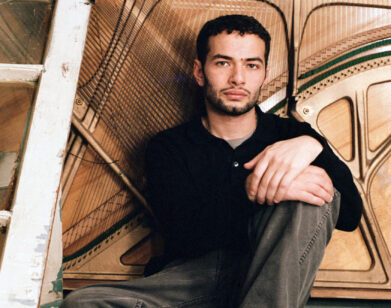Cleaning Up After Berlin Gallery Weekend
“No more sugar for the monkey” is the name that curator Christopher David chose for the show that he organized with Jochen Kooper in Stattbad, the guerrilla gallery they are developing from a 2,000 square-meter early nineteenth-century swimming complex in Wedding, because “there is no more money or other sweet stuff hyping up art world any more.” Yet no creature at the packed all-night opening for the most renegade show during Berlin’s Gallery Weekend lacked for stimulation. After all, there was work to see by more than thirty Berlin-based artists arranged in a labyrinthine industrial basement beneath a former public pool: Hundreds of cool kids swarmed through a space that looked more like the set for the next instalment in the Hostel series than an art exhibition.
Thirty-eight officially registered galleries and countless tag-alongs hosted openings, brunches, dinners and after-parties during the course of three dizzying days. Unlike fairs or biennials, which are anomalies in a city’s art life, Gallery Weekend draws international attention to Berlin’s everyday art-centric lifestyle. Coinciding with Berlin’s all-night May Day pandemonium, where the city practically sanctifies a night of property destruction, Gallery Weekend is a three-day celebration of the normal calm casual coolness of the Berlin art community.
This year’s highlights included extraordinary, precise renditions of drab, cityscapes spray-painted on used cardboard by Evol at the Wilde Gallery, dreamy watercolors by Martin Dammann at Galerie Barbara Thumm, a captivatingly creeping black and white installation at the Upstairs Berlin by Simon Schubert and the opening of Moeller Fine Arts, a jewel-box like new gallery with an un-Berlin marble lobby and gilded ceilings headed by renowned Dada and Bauhaus dealer and consultant Achim Moeller’s capable daughter Stephanie. Peres Projects had delightful new work by painter Kaye Donachie and Terence Koh. At the opening Koh, dressed in a T-shirt encrusted with white and cream pearls from his upcoming line for Opening Ceremony. He matched his sculpture of himself as a holy bunny man wearing a pearl loincloth and covered in white gauze.
At the packed KW opening, a dense crowd muscled competitively for Bar BQ sausages. Sam Keller surveyed the scene with warm amusement. “Berlin always is exciting,” he said. “You never know what exciting thing will happen next but it is sure to be unexpected.”
Keller proved prescient back at “No more sugar for the monkey.” After an assistant started locking up the Stattbad space, Damien Hirst’s favorite sculptor John Isaacs enlisted painter of luscious, eruditely inspired mythic pin-ups, David Nicholson in an unscripted smashing of Isaacs’ centerpiece for their collaborative contribution to the show. Isaacs’ sculpture consisted of an elegant polished black plinth supporting a glazed crude-colored ceramic rock with delicate metal chains. Each side of the plinth featured brilliantly bright allegorical paintings by Nicholson, including a self-portrait of himself, posed as a bearded centaur and hoisting a brown boulder over his head while lions leapt at his hooves, inspired by a Roman fresco in the Pergamon Museum. Isaacs felt something was unresolved. So they smashed the rocks. At the sound of shattering art, gallerists David and Kooper came racing. Nicholson explained that he and Isaacs, the most accomplished and mature artists in the show’s roster, were responsible, and David turned back to the issue of finding more vodka. With that, the monkey got back to business.







